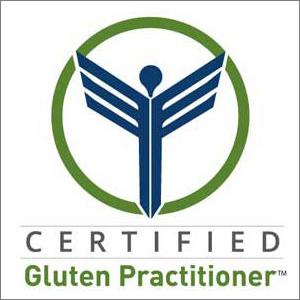 First of all, here’s the good news:
First of all, here’s the good news:
Even before you became gluten-free or learned you had food allergies, you were already customizing your diet.
You did this every time you decided there was a food you didn’t like!
Don’t care for fish?
Spinach?
No problem.
(When I was growing up the culprit was oranges).
Most of the time, you can easily choose not to eat what you don’t like.
(Unless your parents are telling you otherwise)
We’ve all done this, right?
The challenge, then, is when you are given a specific medical diagnosis – be it Celiac Disease, or a food allergy that requires a special diet.
In other words, your choices have now been taken away – or, at least, that’s how your brain perceive it.
What seems like a logical solution becomes, instead – a threat!
(Our brains don’t like to feel threatened, either).
“What do you mean I can no longer order my favorite pizza?”
“What do you mean I can no longer eat eggs for breakfast?”
Are you kidding me?!
You become defensive, angry.
After all, there’s a big difference between deciding for yourself what you like or don’t like – versus being told what to eat.
Suddenly you become a 2 year old again, fighting authority and stomping your feet – figuratively speaking, anyway.
It isn’t a pretty picture, is it?
If this sounds like you, here are 3 quick and easy ways to help you break the cycle.
Focus On What You CAN Eat!
Fresh, wholesome foods should be the mainstay of your new diet.
The goal, here, is to focus on the vast selection of good-for-you foods that are readily available, rather than dwell on what’s missing.
(More on that later).
The beauty of favoring these whole foods is two-fold:
- Many are naturally gluten-free.
- You can still pick and choose what you like.
Whenever possible, opt for organic fruits and vegetables, hormone-free, grass-fed beef and organic, cage-free poultry.
Choose wild fish over farmed.
Make sure your diet also includes whole grains and legumes, nuts and seeds, and healthy fats.
(The latter are especially important if your tastes run more toward vegetarian or vegan).
And yes – fats can be healthy, too!
It’s simply a matter of choosing the right ones.
Don’t Deprive Yourself
No matter what you might be craving – be it pasta, cookies or your favorite pie – chances are there’s a gluten-free counterpart available at your local grocer.
(Or at the push of a button – if you order online).
What I’m not giving you permission for – is to buy the gluten-containing donuts that are calling your name.
(You do want to get better, right?)
Instead, be sure to plan ahead, and either:
a) Have a selection of gluten-free cookies, crackers and the like – in your kitchen cupboard at all times, whether store bought or home-made
b) If that’s too tempting, give yourself permission to buy some decadent chocolate, or gluten–free goodies when temptation strikes.
Be forewarned – mediocre doesn’t do the trick.
When you give yourself permission to splurge – then make sure you are splurging in every sense of the word.
Otherwise, you’ll only want more.
Research your neighborhood for a good gluten-free bakery or a well-stocked Health Food store that is likely to have what you want.
Make it a moment that really counts.
Ask For Outside Help
Sometimes what we really need is another person to shine a light on things, and help us get clear.
Being part of the gluten-free community comes with many challenges, that’s for sure – often on a daily basis.
It goes with the territory.
Bottom line – if your food challenges, due to allergies or full blown Celiac Disease, are more than you can handle – then consider working with a coach.
And rest assured, a good coach will always meet her clients where they’re at.
Baby steps are perfectly OK!
Have questions?
Just email me at info@designahealthylife.com and we’ll chat about it.
 Follow
Follow


Speak Your Mind